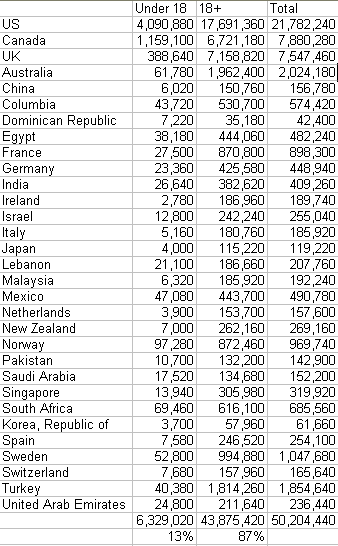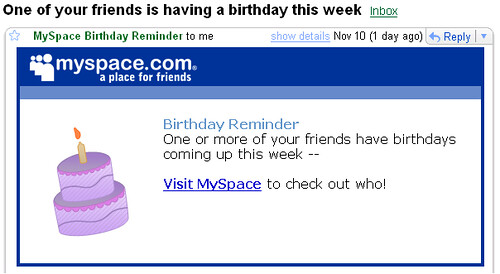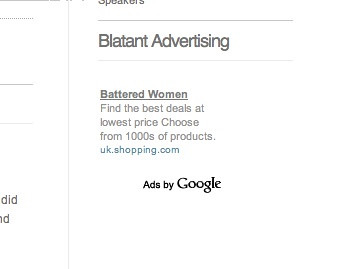When I read the technology news, concepts about cloud computing still seem to be debated . I think to myself: you are kidding me right? I take a step back and think maybe the future won’t be like the current mantra, but then again, trends take time to materialise.
Scanning through my hard-disk, I could not help but laugh after I found a document I wrote to a friend in February 2006 – and as I said in the document "Those six points, as rough as they are, form core elements in my thinking on how I approach business on the Internet …[I’ve been thinking about it] since November 2003"
So below, is literally a copy and paste of that document that has seeds from way back in 2003 when I submitted a grant application for a business idea (ahem, no response obviously…). The fact that nearly half a decade has passed since I first synthesised these ideas (and no doubt, from reading of the thinkers of the day not just me being imaginative) means they are not flake predictions: they are real. Ready?
1. Digital future. All information – news reports, television shows, educational text books, radio shows – are being digitalised, coexisting with their analogue versions. Whether the digital replicas replace their analogue counterparts is pure speculation. But one fact we cannot ignore is that the possibility is there – all content is now digital. And consumers will switch to the digital version if the value of the content consumed is better realised in digital form
- Quick case study. Many pundits believe newspapers will not exist in 15 years. I know they won’t exist in 15 years, and I have spent three years thinking about this very point. At first I used to think digital replicas, as shown by http://www.newsstand.com, was what was going to transform the newspaper business. What I didn’t realise, is that the current newspaper experience far exceeds the digital replica (I was hung up on the idea of electronic paper [www.eink.com] – which still remains a big possibility). But I knew the digital future was going to make the current newspaper business obsolete – there is more value out of digitial. It only just hit me recently by observing my own behaviour– traditional newspapers are not going to be replaced by digital versions – rather, the method¬ that people receive their news is going to change. And this fact is embodied by the recent acknowledgment of the world’s great newspapers of not being in the newspaper business anymore, but in the information business now. I used to read every single major newspaper, and several international newspapers, as I was a debater – I was a heavy news consumer, and I still am. Today, I still follow the news very closely – but I have not read a newspaper all year. Why? I receive all my information needs through websites, RSS feeds and blogs. A new method, made possible by the digital future. People means of consuming content will change because of digital.
2. Internet as infrastructure. It doesn’t take a genius to realise that the internet will be the core infrastructure of anything to do with information and communications. The power of the internet as infrastructure to communications and information unlocks opportunities that are transforming the world. Radio, TV, phone calls – you name it – can be done via the internet protocol now.
3. Content is king, distribution is queen – but advertising is what pays for the cost of that sting. Google now makes more revenue than the three prime time television stations in the USA. In monetary terms, that’s about $10 billion a year. And yet, 99% of that revenue comes from one thing – Google’s click-through advertising (about 45% from Google results, the rest from the Google network of publishers through adsense). HarperCollins announced last week that they are trialling a new business model of providing books for free but supported by advertising – the consumer book business up until then was literally the only segment of media not reliant on advertising as a revenue model. Whilst broadcasting organisations make money from several sources, advertising is literally the backbone of their revenue. To make money out of any content, you place a huge reliance on advertising.
In short, if you want to make money out of content, you need to understand advertising4. One-to-one advertising is the superior form of advertising. Partly due to technological factors, the mass media could only advertise through a one-to-many medium – meaning one message to many. The digital-internet future has transformed that ability, by customising content on a one-to-one basis. If advertising, and content can be targeted to an individual’s personality profile and preferences, it allows for the value of the content to be maximised, with 1-to-1 advertising returning a higher return on campaigns Рfar superior than any other form of advertising. Superior because it can make advertising more relvant for consumers (ie, higher response rate), it can increase advertising inventory (mass media advertising is a bit like throwing pamphlets out of a plane, hoping the right people catch them Р1-to-1 means the right people get it at minimal cost and best of all, it creates better accountability which is what advertisers now demand.
5. The best business practice for one-to-one advertising is not there yet. The internet is the platform that enables one-to-one advertising, and yet, this opportunity has still not been fully exploited. There is a massive need in the market, for a means of providing personalised advertising far superior to the current technologies and methods. Google populised an innovative form of advertising through click-throughs. However internet click-throughs, despite providing more accountable and better targeted advertising, still lacks the ability to unleash the real power of one-to-one advertising. The power of the internet as a one-to-one advertising platform is still in its infancy
6. Privacy matters. Privacy is the right to determine what information is available about you, when you want it to be available, and to whom you want it available to. Current practices of companies who gain as much information about you through your sales history, your activity on the web, and the like – are often doing so without the full knowledge of the consumer. It is information collected by spying on a consumer, and whilst some people retaliate by various measures (ie, fake information, anonymous proxies), there is great mistrust by the public in providing personal information, or rather, too much to one organisation. If information is to be used about people, there needs to be proper approval – both for legal reasons (a business model cannot rely on consumer stupidity) but also for the integrity of the data (ie, a cooperative consumer will provide more reliable data)
- Companies like Double Click who would collect your surfing history relied on placing a cookie on your computer – what happens if you delete that cookie? And what happens if your dad, mum, and cousin from Brazil, use the same computer as you? That creates a fairly inconsistent “profile” of a person that is to be targeted
I had totally forgotten I had written that. And reading it now it’s a bit lame and I could probably extend on things a little bit – actually there are things I have actually written in blog posts this last year. Better still, I can provide actual evidence that validate these trends as advancing like the existence of the VRM project for advertising, the big clash with Facebook and privacy (and lets not forget the first time ), and Microsoft’s recent announcement about moving away from software (to pick but a few examples).
If this is what I was seeing in November 2003 as a naive university student absorbing what the industry trends were back then; February 2006 when I wrote to my friend what I thought he needed to consider about the future; and the fact I still agree with it in May 2008 – I think things are beyond speculation: these are long-term trends that are entrenched.












